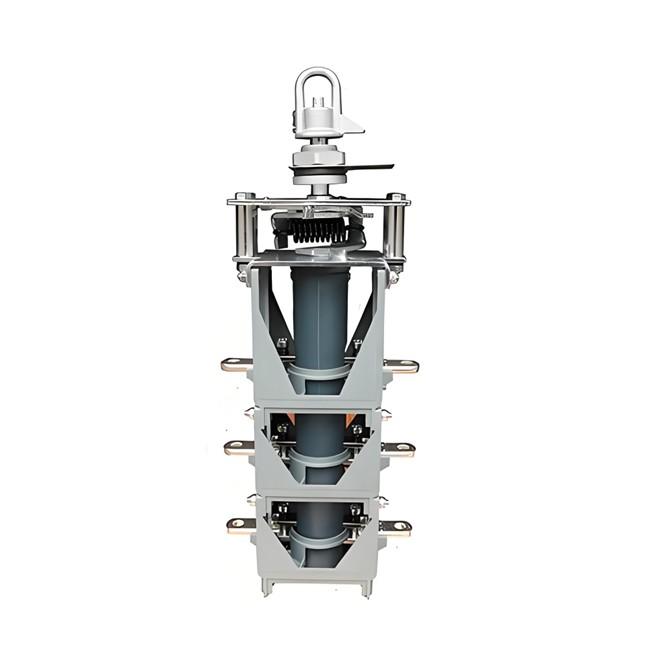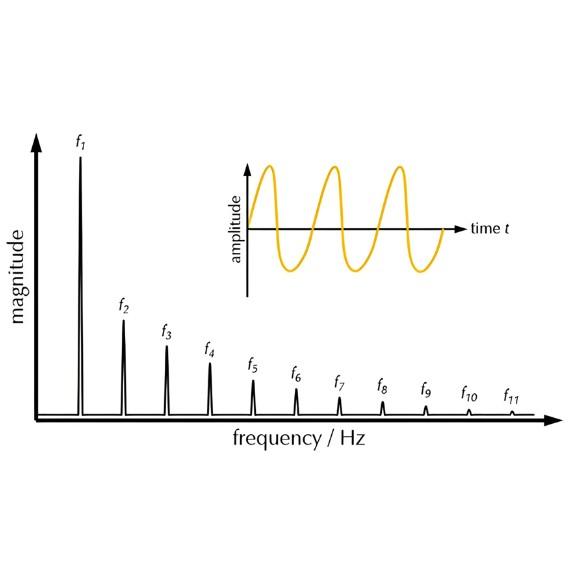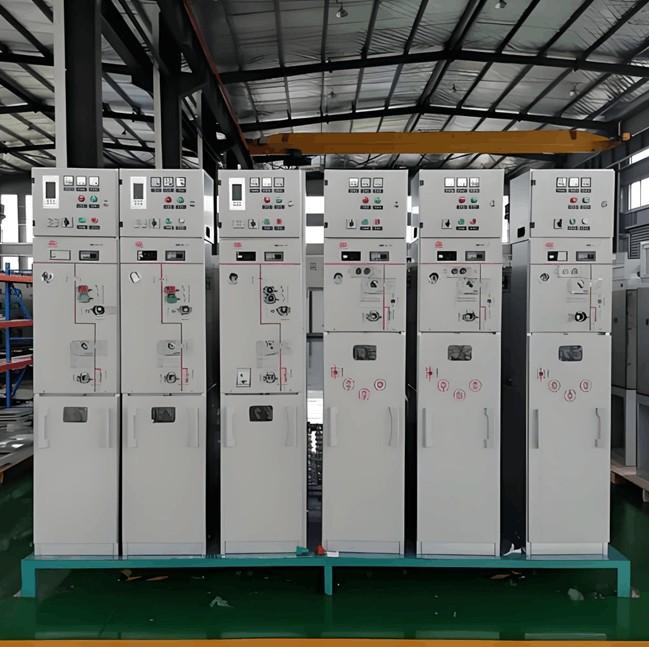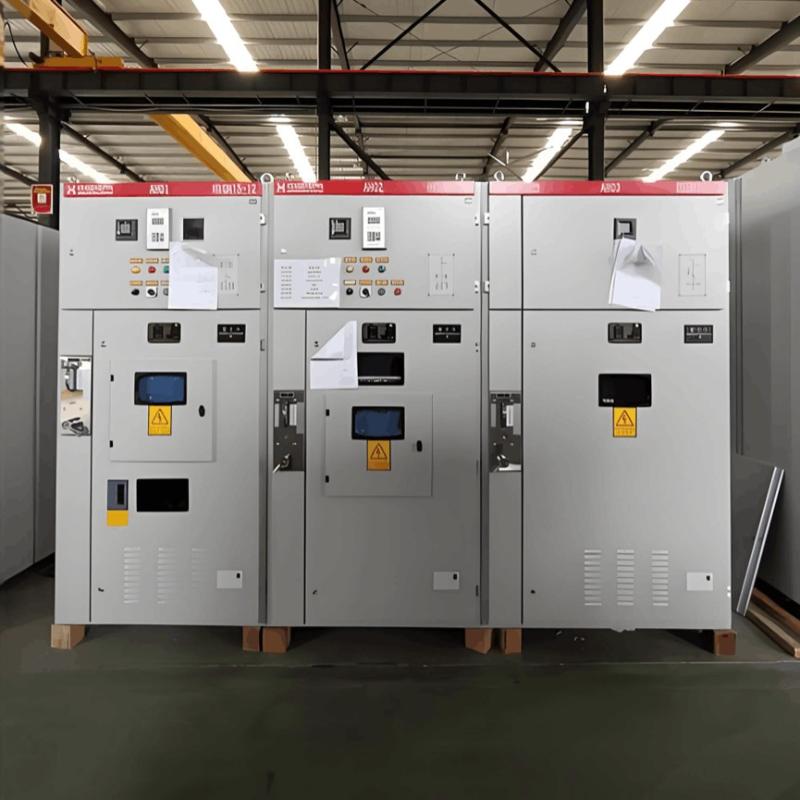According to the type of connection FACTS Controller with the power system, it is classified as;
Series Connected Controller
Shunt Connected Controller
Combined Series-Series Controller
Combined Shunt-Series Controller

Series-Connected Controllers
Series controllers introduce a voltage in series with the line voltage, typically using capacitive or inductive impedance devices. Their primary function is to supply or absorb variable reactive power as needed.
When a transmission line is heavily loaded, the increased reactive power demand is met by activating capacitive elements in the series controller. Conversely, under light loading—where reduced reactive power demand causes the receiving end voltage to rise above the sending end voltage—inductive elements are used to absorb excess reactive power, stabilizing the system.
In most applications, capacitors are installed near the line ends to compensate for reactive power demand. Common devices for this purpose include Thyristor Controlled Series Capacitors (TCSC) and Static Synchronous Series Compensators (SSSC). The basic configuration of a series-connected controller is shown in the figure below.

Shunt-Connected Controllers
Shunt-connected controllers inject current into the power system at their connection point, utilizing variable impedances such as capacitors and inductors—similar in principle to series controllers but differing in connection method.
Shunt Capacitive Compensation
When a capacitor is connected in parallel with the power system, the approach is called shunt capacitive compensation. Transmission lines with highly inductive loads typically operate at a lagging power factor. Shunt capacitors address this by drawing current that leads the source voltage, offsetting the lagging load and improving the overall power factor.
Shunt Inductive Compensation
When an inductor is connected in parallel, the method is known as shunt inductive compensation. This is less commonly used in transmission networks but becomes critical for very long lines: under no-load, light-load, or disconnected load conditions, the Ferranti effect causes the receiving end voltage to exceed the sending end voltage. Shunt inductive compensators (e.g., reactors) absorb excess reactive power to mitigate this voltage rise.
Examples of shunt-connected controller systems include Static VAR Compensators (SVC) and Static Synchronous Compensators (STATCOM).

Combined Series-Series Controllers
In multi-line transmission systems, combined series-series controllers employ a set of independent series controllers working in coordination. This configuration enables individual series reactive compensation for each line, ensuring tailored support for every circuit.
Moreover, these systems can facilitate real power transfer between lines through a dedicated power link. Alternatively, they may adopt a unified controller design where the DC terminals of converters are interconnected—this setup directly enables real power transfer to the transmission lines.A representative example of such a system is the Interlink Power Flow Controller (IPFC).

Combined Shunt-Series Controllers
This type of controller integrates two functional components: a shunt controller that injects voltage in parallel with the system, and a series controller that injects current in series with the line. Crucially, these two components operate in coordinated fashion to optimize overall performance.A prominent example of such a system is the Unified Power Flow Controller (UPFC).

Types of FACTS Devices
A range of FACTS devices has been developed to meet diverse application needs. Below is an overview of the most commonly used FACTS controllers, categorized by their functional type:
Thyristor Controlled Series Capacitor (TCSC)
Thyristor Controlled Series Reactor (TCSR)
Thyristor Switched Series Capacitor (TSSC)
Static Synchronous Series Compensator (SSSC)
Static VAR Compensator (SVC)
Thyristor Controlled Reactor (TCR)
Thyristor Switched Capacitor (TSC)
Thyristor Switched Reactor (TSR)
Static Synchronous Compensator (STATCOM)
Let’s examine each compensator in brief:
Thyristor Controlled Series Capacitor (TCSC)
TCSC introduces capacitive reactance in series with the power system. Its core structure includes a capacitor bank (composed of multiple capacitors in series-parallel configuration) connected in parallel with a thyristor-controlled reactor. This design enables smooth, variable series capacitance adjustment.
Thyristors regulate the system’s impedance by controlling the firing angle, which in turn adjusts the total circuit impedance. A simplified block diagram of the TCSC is shown in the figure below.

Thyristor Controlled Series Reactor (TCSR)
TCSR is a series compensator that provides smoothly adjustable inductive reactance. Its design is analogous to the TCSC, with the key difference being that the capacitor is replaced by a reactor.
The reactor ceases conduction when the thyristor firing angle reaches 180°, and begins conducting when the firing angle is less than 180°. A basic diagram of the Thyristor Controlled Series Reactor (TCSR) is shown in the figure below.

Thyristor Switched Series Capacitor (TSSC)
TSSC is a series compensation technique similar in principle to TCSR but with a key operational difference: while TCSR achieves power control by adjusting thyristor firing angles (enabling stepwise regulation), TSSC thyristors operate in a simple "on/off" mode with no firing angle adjustment. This means the capacitor is either fully connected to or completely disconnected from the line.
This simplified operation reduces the complexity and cost of both the thyristors and the overall controller. The basic diagram of TSSC is identical to that of TCSC.
Static Synchronous Series Compensator (SSSC)
SSSC is a series compensation device used in transmission systems to regulate power flow by controlling the equivalent impedance of the line. Its output voltage is fully controllable and independent of the line current—by adjusting this output voltage, the line’s effective impedance can be precisely modulated.
Functionally, SSSC acts like a static synchronous generator connected in series with the transmission line. Its core purpose is to adjust the voltage drop across the line, thereby controlling power flow. SSSC injects a voltage that is in quadrature (90° phase shift) with the line current: if the injected voltage leads the current, it provides capacitive compensation; if it lags the current, it provides inductive compensation.A basic diagram of the Static Synchronous Series Compensator is shown in the figure below.

Static VAR Compensator (SVC)
A Static VAR Compensator (SVC) consists of a fixed capacitor bank connected in parallel with a thyristor-controlled inductor. The thyristor’s firing angle regulates the reactor’s operation, directly controlling the voltage across the inductor—and thus the amount of power it draws.
This configuration allows SVC to dynamically adjust reactive power output, stabilizing voltage and improving power factor in the transmission system. A basic diagram of the Static VAR Compensator is shown in the figure below.

Static VAR Compensator (SVC) Applications
SVCs are versatile devices used to enhance power system performance, with key functions including:
Improving power factor
Regulating voltage levels
Reducing harmonic distortion
Stabilizing transmission networks
They are also widely adopted in industrial settings for reactive power management and power quality improvement. Below is an overview of the most common SVC configurations:
Thyristor Controlled Reactor (TCR)
A TCR consists of a reactor connected in series with a thyristor valve—specifically, two thyristors connected in anti-parallel. These thyristors conduct alternately during each half-cycle of the AC power supply, with a control circuit delivering firing pulses to the thyristors every half-cycle.
The thyristor firing angle determines the amount of lagging reactive power supplied to the system. TCRs are commonly deployed in EHV (Extra High Voltage) transmission lines, where they provide reactive power compensation during light-load or no-load conditions. A basic diagram of a Thyristor Controlled Reactor is shown in the figure below.

Thyristor Switched Capacitor (TSC)
Under heavy load conditions, reactive power demand surges—and Thyristor Switched Capacitors (TSCs) are designed to meet this increased demand. They are commonly deployed in EHV transmission lines during periods of high load.
TSC shares a similar structural principle with TCR, but with a key component swap: the reactor in TCR is replaced by a capacitor. Like TCR, TSC regulates the amount of reactive power supplied to the transmission line by adjusting the thyristor firing angle.A basic diagram of the Thyristor Switched Capacitor (TSC) is shown in the figure below.

Thyristor Switched Reactor (TSR)
TSR is structurally similar to the Thyristor Controlled Reactor (TCR) but differs in operation: while TCR adjusts current by controlling thyristor firing angles (enabling phase control), TSR thyristors operate in a binary "on/off" mode with no phase control. This means the reactor is either fully connected to the circuit or completely disconnected.The absence of firing angle regulation simplifies the design, reducing thyristor costs and minimizing switching losses. The basic diagram of a TSR is identical to that of a TCR.
Static Synchronous Compensator (STATCOM)
STATCOM is a power electronics-based voltage source converter (VSC) that regulates transmission system performance by supplying or absorbing reactive power—and can also provide active power support when needed. It is particularly effective in transmission lines with poor power factor and voltage regulation, making it a widely used device for enhancing voltage stability in power systems.
STATCOM operates using a charged capacitor as its DC input source, which is converted into three-phase AC voltage via a voltage-controlled inverter. The inverter output is synchronized with the AC power system, and the device is connected in shunt with the transmission line through a coupling transformer. By adjusting the inverter’s output, the reactive (and active) power supplied by STATCOM can be precisely controlled. A basic diagram of STATCOM is shown in the figure below.

Interline Power Flow Controller (IPFC)
IPFC is a compensation technique designed for multi-line transmission systems, featuring multiple converters linked via a common DC bus—each converter connects to a separate transmission line.
A key capability of these converters is real power transfer, enabling both real and reactive power to be balanced across interconnected lines. This coordinated control enhances overall system efficiency and stability in multi-line networks.A basic diagram of the IPFC is shown in the figure below.

Unified Power Flow Controller (UPFC)
UPFC integrates a STATCOM (Static Synchronous Compensator) and an SSSC (Static Synchronous Series Compensator) via a shared DC voltage link, combining their functionalities into a single system. It utilizes a pair of three-phase controllable bridges to generate current, which is injected into the transmission line through a coupling transformer.
UPFC excels in enhancing multiple aspects of power system performance, including voltage stability, power angle stability, and system damping. It can precisely control both active (real) and reactive power flow in transmission lines. However, it operates optimally only under balanced sine wave conditions and may not function effectively during abnormal system states. Additionally, UPFC helps suppress power system oscillations and improves transient stability.A basic diagram of the Unified Power Flow Controller (UPFC) is shown in the figure below.





































